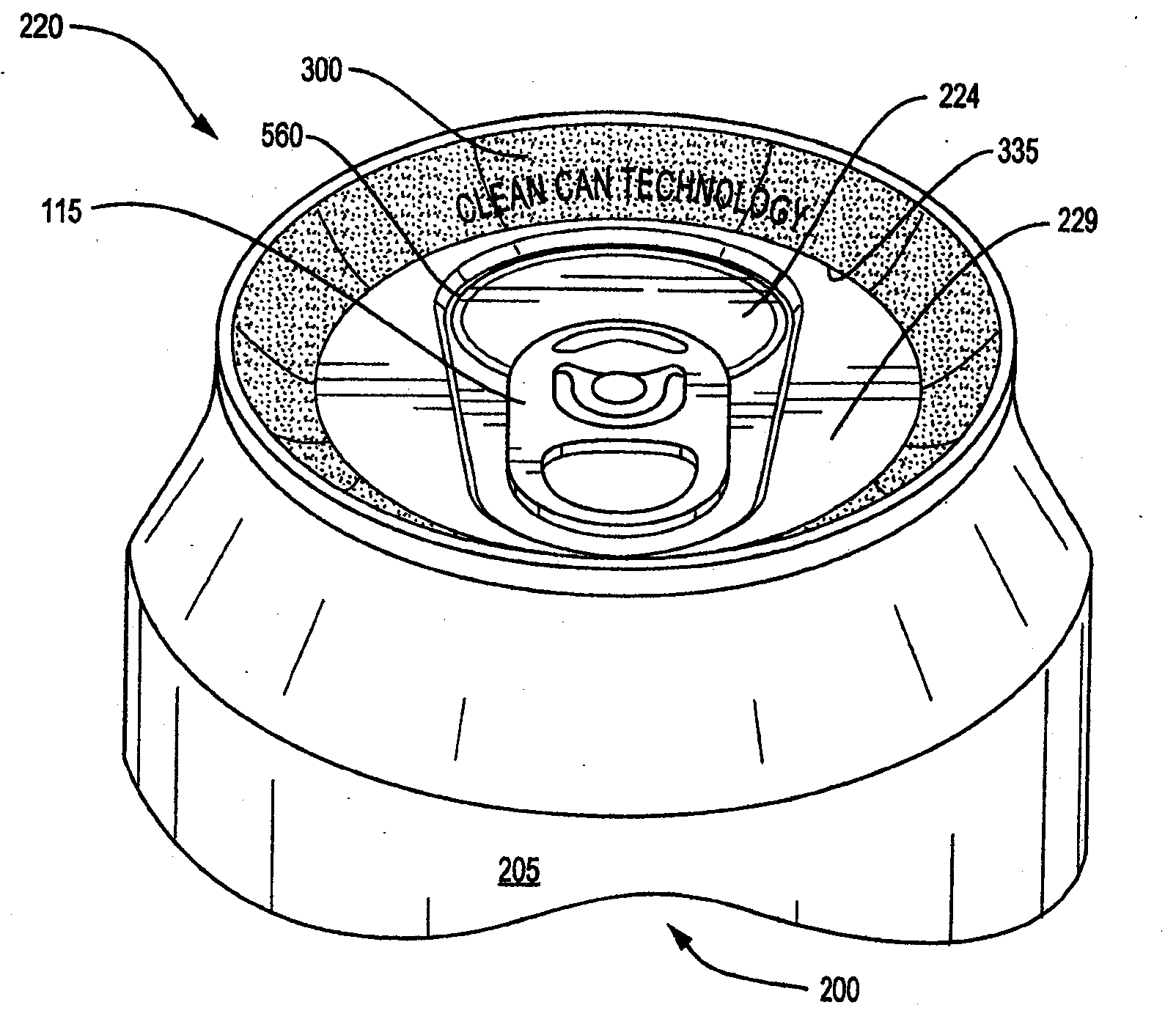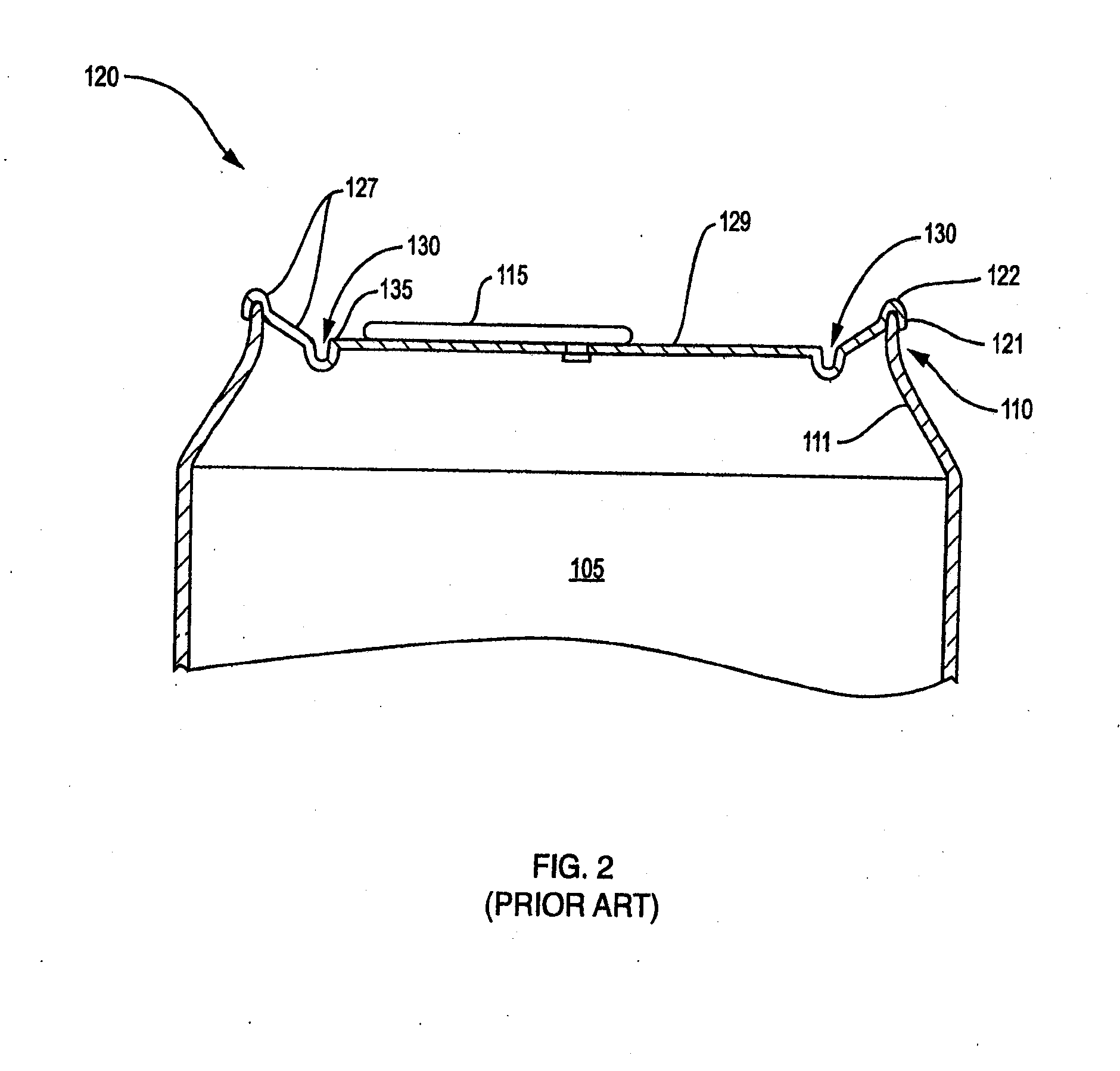Beverage can marketing device
a beverage can and marketing device technology, applied in the field of beverage cans and beverage can tops, can solve the problems of contamination issues on the outer surface of beverage can tops such as the can b>, conventional beverage can and beverage can top configurations such as those described above, and suffer from a variety of deficiencies
- Summary
- Abstract
- Description
- Claims
- Application Information
AI Technical Summary
Benefits of technology
Problems solved by technology
Method used
Image
Examples
Embodiment Construction
[0079]Embodiments disclosed herein provide “Clean Can” technology that provides for more sanitary beverage cans and can tops. Beverage cans have been in use for many years in packaging of many types of alcoholic and non-alcoholic beverages such as soda, pop, soft drinks, fruit juice, beer, wine and even water. A sanitary issue that is present in conventional cans and can tops is that conventional can tops define a countersink groove, crevice, or well area that surrounds an upper surface of conventional can tops, and is typically defined just along the inside of the rim of the can. The groove is provided to add strength to the can top, especially for carbonated beverages. This groove is highly susceptible to collection of unwanted dust, dirt, debris, grime, microbes or other unwanted debris. This can happen from debris that settles onto the can top and then that falls into the groove during shifting, movement or handling of the can, or may result when a person wipes a conventional ca...
PUM
 Login to View More
Login to View More Abstract
Description
Claims
Application Information
 Login to View More
Login to View More - R&D
- Intellectual Property
- Life Sciences
- Materials
- Tech Scout
- Unparalleled Data Quality
- Higher Quality Content
- 60% Fewer Hallucinations
Browse by: Latest US Patents, China's latest patents, Technical Efficacy Thesaurus, Application Domain, Technology Topic, Popular Technical Reports.
© 2025 PatSnap. All rights reserved.Legal|Privacy policy|Modern Slavery Act Transparency Statement|Sitemap|About US| Contact US: help@patsnap.com



